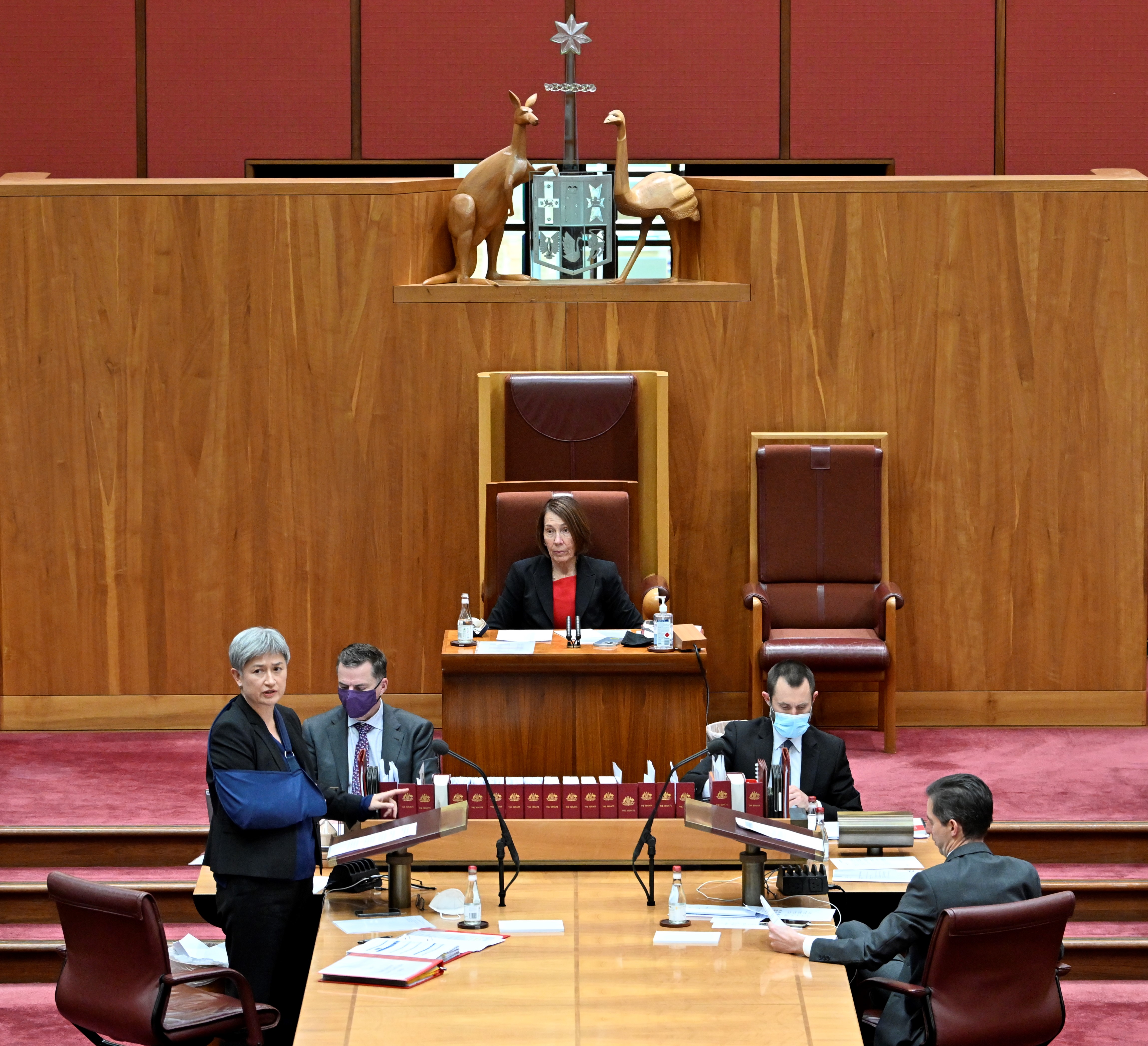President of the Senate
Understand the role of the President of the Senate with this fact sheet. It includes information about how the President is elected and their role in the Senate.
What will I learn?
- The President of the Senate runs the meetings in the Senate.
- The President is chosen by senators.
Who is the President of the Senate?
The President of the Senate

David Foote/DPS Auspic
Description
The President of the Senate sits in a large, red chair on an elevated platform in the Senate. The President is a senator who has been picked to run the meetings in the Senate. The President’s chair faces the U-shaped seating of the other senators. From here, the President can see and hear everything that happens, and everyone in the Senate can see the President.
Copyright information
Permission should be sought from DPS AUSPIC for third-party or commercial uses of this image. To contact DPS AUSPIC email: auspic@aph.gov.au or phone: 02 6277 3342.
The President of the Senate

David Foote/DPS Auspic
Description
The President of the Senate sits in a large, red chair on an elevated platform in the Senate. The President is a senator who has been picked to run the meetings in the Senate. The President’s chair faces the U-shaped seating of the other senators. From here, the President can see and hear everything that happens, and everyone in the Senate can see the President.
Copyright information
Permission should be sought from DPS AUSPIC for third-party or commercial uses of this image. To contact DPS AUSPIC email: auspic@aph.gov.au or phone: 02 6277 3342.
The President of the Senate is a senator who is the Presiding Officer of the Senate. They are elected by fellow senators to run the meetings of the Senate. The President is an experienced senator and is expected to treat all members of the Senate equally.
Choosing the President
The Senate cannot run without a President. On the first sitting day after a federal election a vote is held to choose a President. Senators are nominated for the position by their peers. The senator that receives the most votes becomes the President. Senators generally follow the convention – tradition – of selecting the government party’s nomination for President.
To assist the President, a panel of Deputy Presidents are also selected to share the role during sitting days.
Role
The President has many responsibilities. They:
- chair – are in charge of – meetings of the Senate
- make sure the standing orders – the rules of the Senate – are followed
- take part in ceremonial occasions, such as hosting foreign heads of state who speak to the Australian Parliament
- manage the Department of the Senate, including budgets, staffing and allocation of offices
- work with the Presiding Officer of the House of Representatives, the Speaker of the House, to maintain services in Parliament House, including broadcasting, computing services and the cleaning and upkeep of Parliament House
- are the spokesperson for the Senate when working with other parts of the Parliament, the government, and others.
The President does not usually participate in debates in the Senate. However, section 23 of the Australian Constitution says that the President can vote along with the other senators. This makes sure that all states have equal representation when a vote occurs. This is different to the House of Representatives where the Speaker only votes if there is a tie.
The President’s chair faces the U-shaped seating of the other senators. The President can see and hear everything that happens, and everyone in the Senate can see the President. The President’s microphone is always on so they can be heard and maintain order in the Senate.